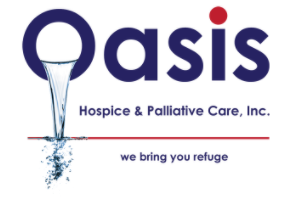When a loved one is facing a serious illness, understanding the types of care available can feel overwhelming. Two of the most commonly discussed options are palliative care and hospice care. Many families wonder: Is palliative care just one step away from hospice?
While the two share a focus on comfort, compassion, and improving quality of life, they serve patients in different stages of illness and with different goals in mind. In this article, we’ll explore the differences between palliative and hospice care, and how to know when it’s time to make the transition from one to the other.
What Is Palliative Care?
The team provides an integrated approach to manage physical symptoms while also addressing the emotional and spiritual needs of the patient and family. Palliative care can be provided at any time during the course of an illness. Contact oasis hospice Care for palliative care near chicago.
This type of care also helps families understand what to expect as the illness progresses. Palliative care is focused on improving quality of life for both patients and their families. It emphasizes symptom management, emotional support, communication between patient and providers, and advanced planning for end-of-life decisions.
What Is Hospice Care
Hospice care is a type of end-of-life care that focuses on comfort and quality of life for those facing terminal illness. This type of care is provided in the home, a hospital, a hospice center, or any other appropriate setting. It includes physical, psychological, spiritual, and social support, as well as medical care.
The core elements of hospice care include:
- Pain relief
- Symptom management
- Emotional and spiritual support
- Practical assistance

How Are Palliative And Hospice Care Different
Palliative care and hospice care are both types of end-of-life medical care, but there are some significant differences between them. Palliative care is typically used for patients with serious illnesses, and its goal is to relieve suffering and improve quality of life.
On the other hand, hospice care is specifically for those who have six months or less to live and focuses on providing comfort and support for the patient and their family. Eligibility for palliative care is determined by the patient’s condition, while hospice care is only available to those who have a terminal illness and are not expected to recover.
Patient Eligibility for Hospice and Palliative Care
Palliative and hospice care both provide an important level of compassionate care for individuals facing a terminal illness. But in order to receive either type of care, the patient must meet certain eligibility requirements.
Generally speaking, palliative care is available to those who are expected to live at least six months. Hospice care is only available when a person has a life expectancy of six months or less. In some cases, patients may qualify for both types of care depending on their individual situation and needs.
For those who are eligible, it’s important to understand the different goals of each type of care so they can make an informed decision about which option best suits their needs.
What Are The Benefits Of Palliative Care
Palliative care is an important part of a patient’s healthcare journey and has many benefits for them. Here the main benefits of palliative care.
- Pain Management – Palliative care can provide relief from pain, discomfort, and other symptoms that may arise during treatment or illness.
- Improved Quality of Life – Palliative care focuses on improving the quality of life for patients by providing emotional support, symptom management, and spiritual guidance.
- Supportive Care Services – Palliative care services include not just medical treatments but also supportive services such as psychological counseling, bereavement counseling, and social work support.
It is essential to understand when these advantages should be used to transition into hospice care for optimal outcomes for all involved parties.
When Should Palliative Care Transition To Hospice Care
Palliative care focuses on symptom relief and improving quality of life, whereas hospice care is end-of-life care. Symptoms should be the primary guide for when to transition from palliative care to hospice care. If they become unmanageable and the quality of life is significantly diminished, it may be time to consider hospice care.
Ultimately, the decision to transition should be made with the patient and their family, taking into consideration all factors.
How Can You Receive Palliative And Hospice Care
While palliative care is available throughout the course of a person’s illness, hospice is typically reserved for those who are less than six months away from death due to their illness. The transition from palliative to hospice care can be difficult, as it signals an end to curative treatment.
No matter where you receive your palliative and/or hospice care services, it is important to remember that you should always consult with your doctor or healthcare provider regarding your specific medical situation before making any decisions about treatment options.
Frequently Asked Questions
What Conditions Qualify For Palliative Care?
Common conditions that qualify for palliative care include cancer, heart disease, lung disease, dementia, Alzheimer’s disease, kidney failure, stroke, and HIV/AIDS.
Does Palliative Care Include Pain Management?
Pain management is an important part of palliative care. It helps individuals and their loved ones cope with the physical and emotional symptoms of a serious illness.
Are Family Members Allowed To Participate In Palliative Care?
Yes, family members are allowed to participate in palliative care. This type of care focuses on relieving pain and other symptoms caused by a serious illness, and having family involved can help make the process smoother.
Are There Any Cultural Considerations For Palliative Care?
When it comes to palliative care, there are important cultural considerations to take into account. Palliative care should be culturally appropriate and respectful of the values, beliefs and traditions of the patient’s family.
Does Insurance Cover Palliative And Hospice Care?
Many insurance plans are starting to cover palliative and hospice care, with over 70% of Medicare Advantage plans offering full coverage for both services. This is great news for those looking for financial help when it comes to making end-of-life decisions.
In-Home Hospice and Palliative Care in Chicago, IL
At Oasis Hospice Care, we’re honored to be a trusted source of comfort, compassion, and expert care for families across Chicago, Illinois. Whether you need in-home hospice care focused on end-of-life support or palliative care to manage serious illness, our dedicated team in River Grove, IL is here to walk with you every step of the way.
We bring peace, dignity, and personalized attention right to your doorstep, ensuring your loved one receives the care they deserve in the place they feel most at home. Call us today at 708-564-4838 to learn how we can support you and your family.

